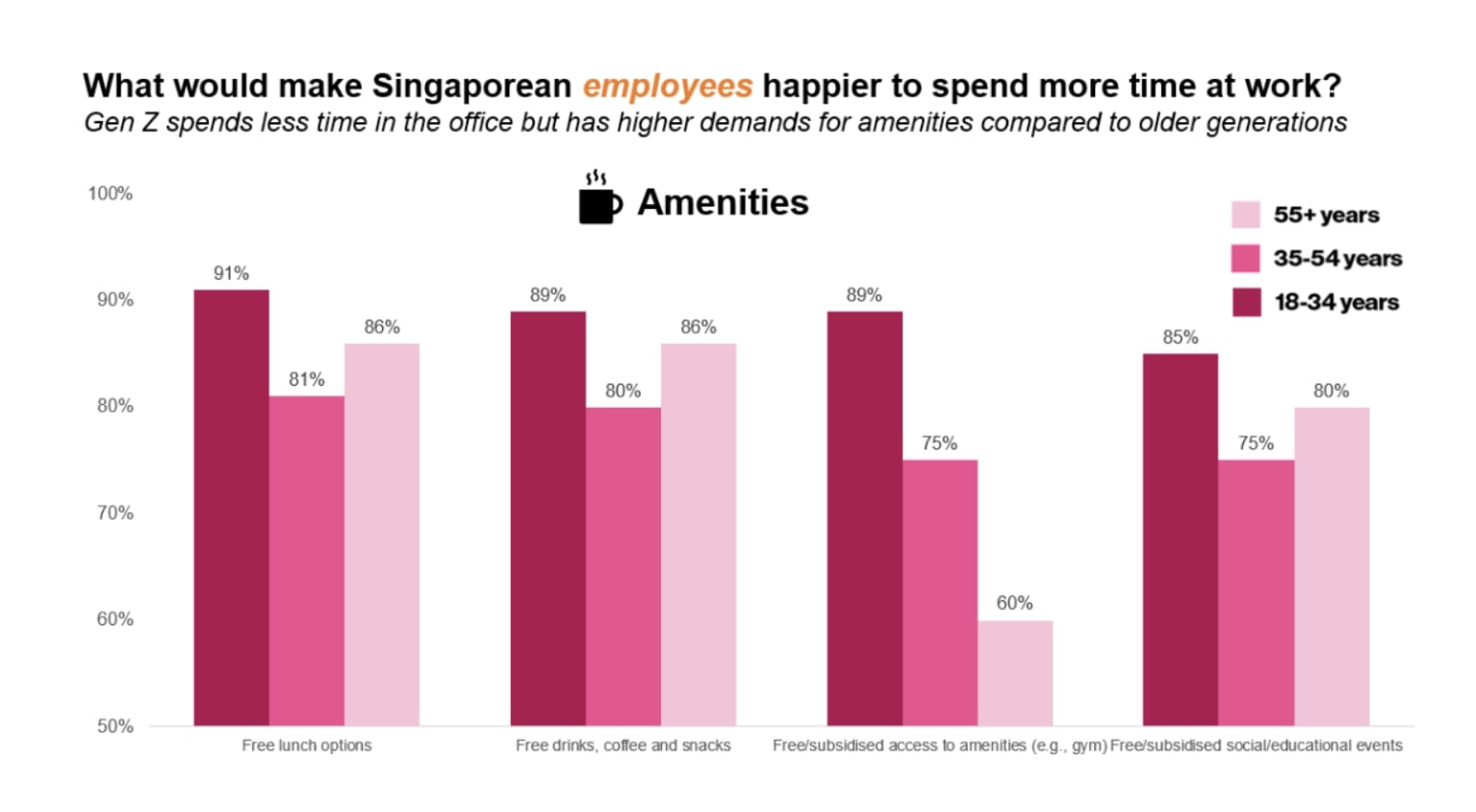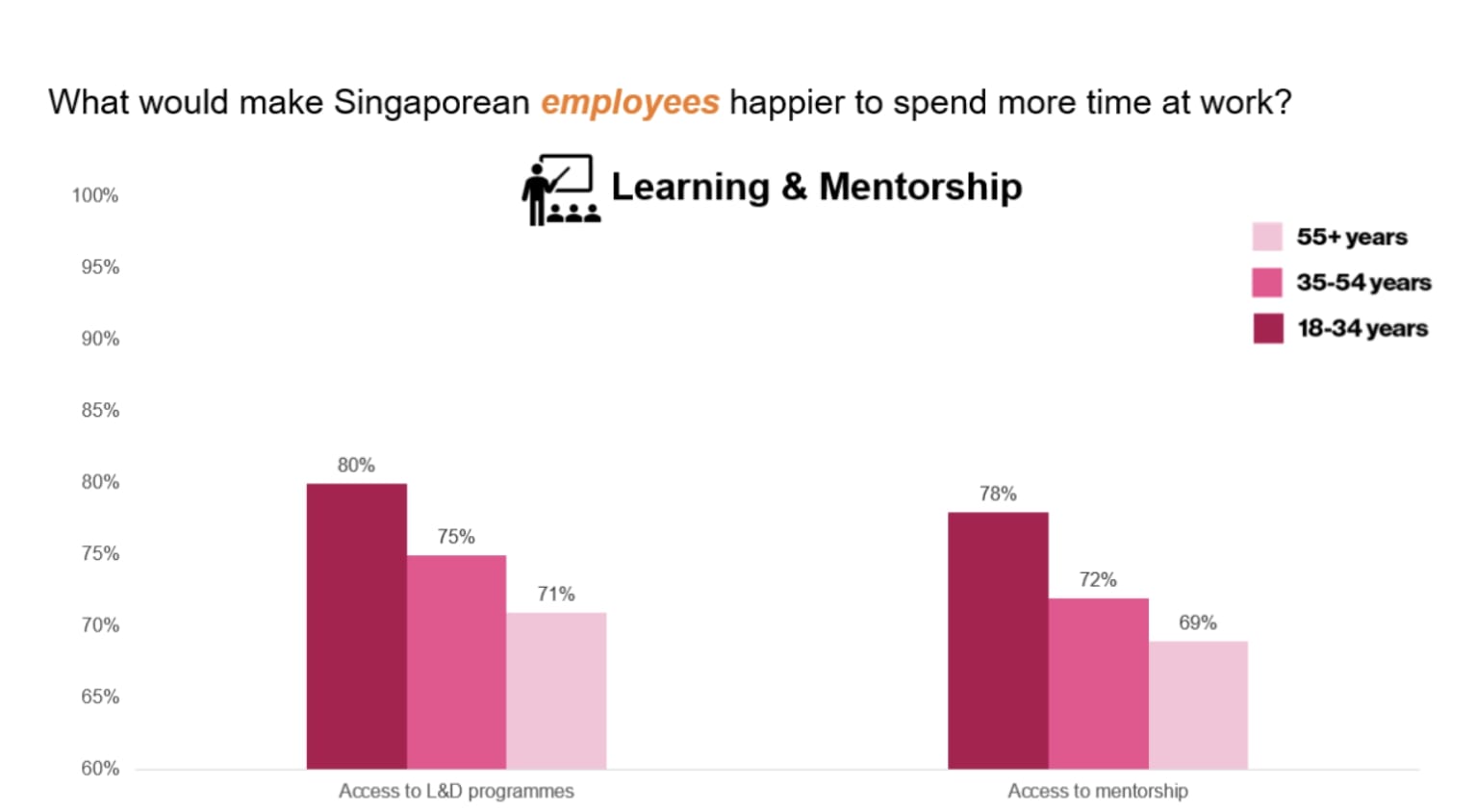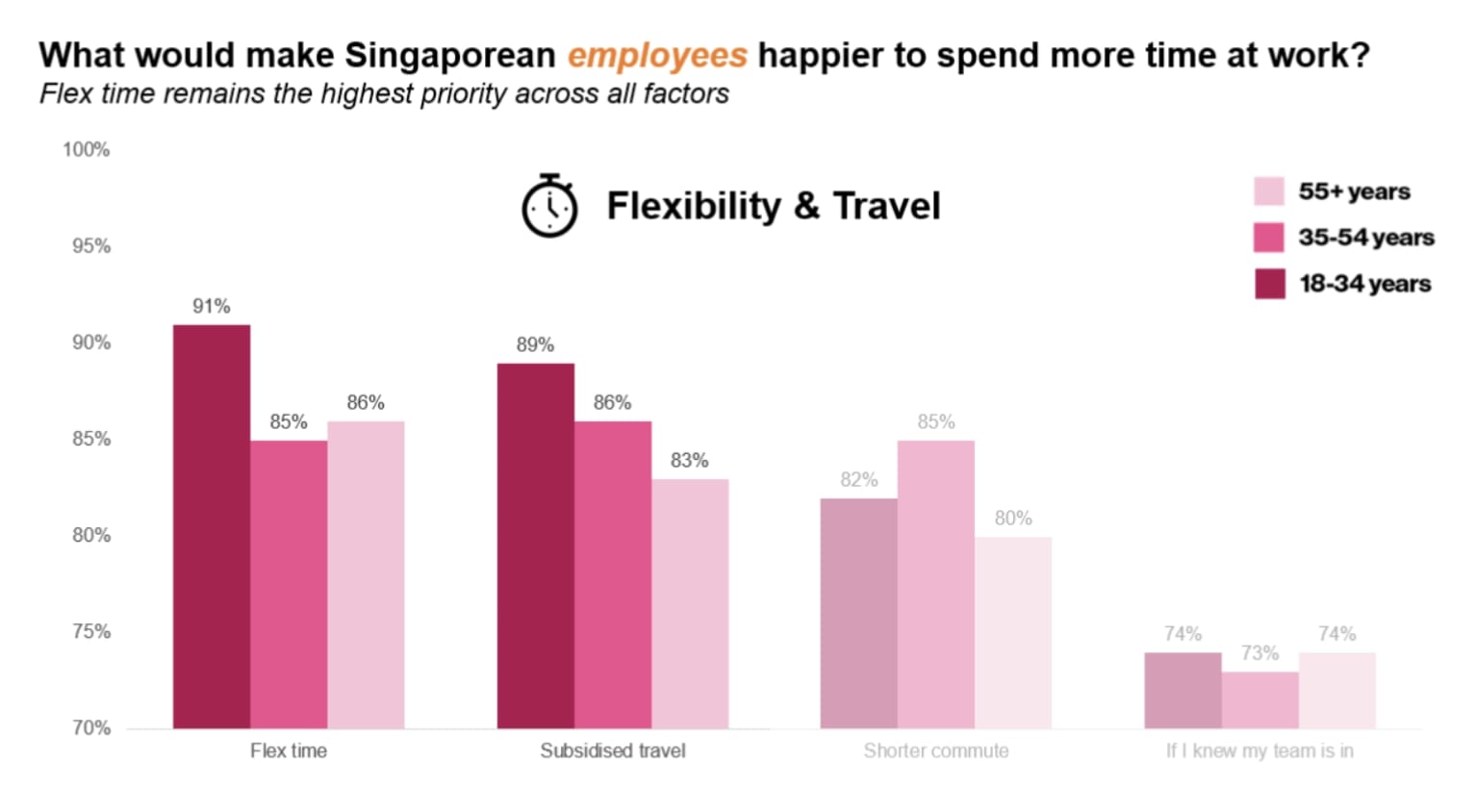SINGAPORE: Amazon, Apple, Citigroup, and Dell were just a few of the companies that once allowed remote work but have now gradually mandated a return to office (RTO) for in-person collaboration, according to Business Insider.
While some of these companies still offer “seasonal flexibility” or hybrid setups, many workers are not pleased with what they see as a move “backwards,” with some even filing petitions against the change.
In Asia, particularly in Singapore, hybrid work has become an even more pressing issue.
While 78% of Singaporeans report dissatisfaction with hybrid arrangements, compared to their global peers (87%), this contrasts sharply with 94% of employers in Singapore expressing satisfaction with the current setup, according to Unispace’s global workplace survey.
However, the survey also revealed that “flexibility and amenities—not mandates—drive Gen Z office occupancy.”
The Independent Singapore spoke with Jianhan Qiu, Principal for Strategy, Asia at Unispace Singapore, to explore if flexibility and better office spaces are enough to meet modern workforce needs.
Rethinking the purpose of the office
Mr Qiu said businesses first need to define the purpose of their office spaces.
For some businesses, it’s a space for collaboration, while for others, it’s about building client trust through in-person engagements or showcasing the brand. A clear purpose helps companies redesign spaces effectively.
“Younger workers tend to spend less time in the office but face more challenges compared to older colleagues—lack of spaces to rest and recharge being a key concern.
As return-to-office levels have increased compared to last year, insights from Singaporean employees highlight the importance of quiet areas, ergonomic workstations, and social spaces in enabling them to perform their best work.
Addressing these preferences through thoughtful design can transform the office into a place employees want to be rather than have to be,” he said.
He also emphasised open communication with employees to align office design with flexible work policies.
Smarter use of space
Businesses struggling with rising costs can think about optimising their space rather than simply downsizing.
According to Mr Qiu, “The goal is to create environments that support modern work styles by offering a balanced mix of collaborative spaces, quiet zones and social areas to foster productivity, innovation, and connection.”
He pointed to Spotify as an example of a company that reduced its office size while still supporting remote work and achieving a 15% lower attrition rate.
In Singapore, flexibility is still limited. Unispace found that 91% of younger employees, aged 18-34, would spend more time in the office if offered flexible work hours or conditions.

When asked whether improved office amenities or a policy shift plays a bigger role in meeting Gen Z expectations, Mr Qiu said, “Policy shifts play a larger role in meeting Gen Z expectations, coupled with leadership buy-in and thoughtful office design.”
He noted, “To truly resonate with Gen Z, companies must adopt flexible policies—such as hybrid or adaptable work arrangements—that empower employees to balance their professional and personal lives.”
“Beyond amenities and flexibility, policies should also focus on career growth and mentorship as Gen Z prioritises meaningful work and development opportunities, so organisations fostering a culture of trust, empowerment, and collaboration will stand out as preferred employers,” he added.

What Singapore workers need
To meet the needs of Singaporean workers, Mr Qiu suggested five key points:
- Give employees flexibility: Offer employees a simple choice of where and how they want to work to boost satisfaction and engagement.
- Provide food: Offer free lunch, drinks, and snacks, which are highly valued by Singaporean employees, to boost morale and create a sense of community.
- Rightsize office spaces: Adapt office layouts to reflect actual usage patterns, ensuring every space adds value, transforming the office into a place employees want to visit.
- Address generational gaps: Create workplaces with collaborative spaces for younger employees and quiet areas for older staff to meet everyone’s needs and promote inclusivity.
- Prioritise wellness: Design offices with quiet rooms, ergonomic furniture, and spaces for physical activity to support employee health, boost engagement, reduce burnout, and improve productivity.
In addition, long commutes are a common complaint in return to office arrangements. According to Mr Qiu, giving employees flexible work hours and transport benefits, like subsidies or shuttle services, could reduce this burden.

He noted, “In fact, both flexible work hours and subsidised transportation options are the top factors that would make Singaporean employees more willing to spend time in the office (87%).”
“This is particularly common within the tech industry, where many companies are located outside the CBD, leading to longer commuting times,” he added.
While better office spaces can help retain this generation’s talent-seeking flexibility, they’re only part of the solution.
To keep top talent, especially in a high-cost city like Singapore, employers must combine flexible work policies, thoughtful office designs, and leadership that support employees’ needs. /TISG
Featured image by Depositphotos

